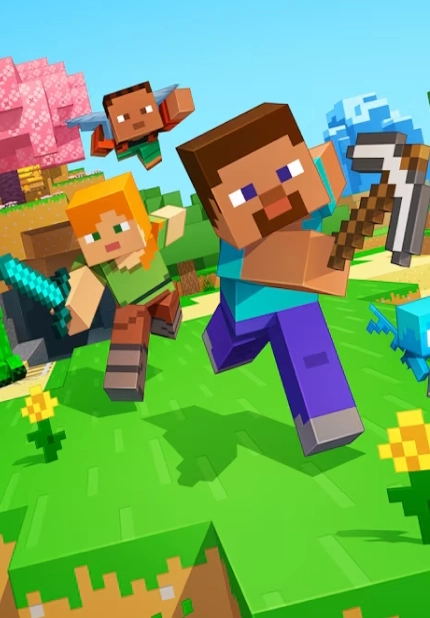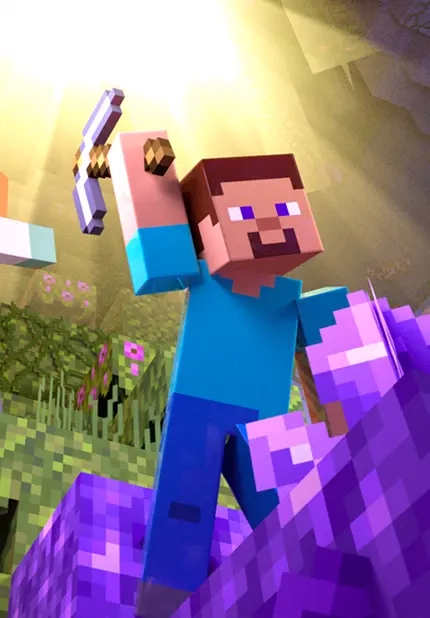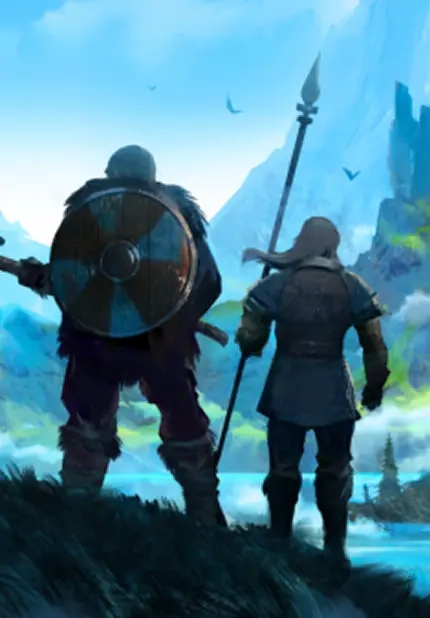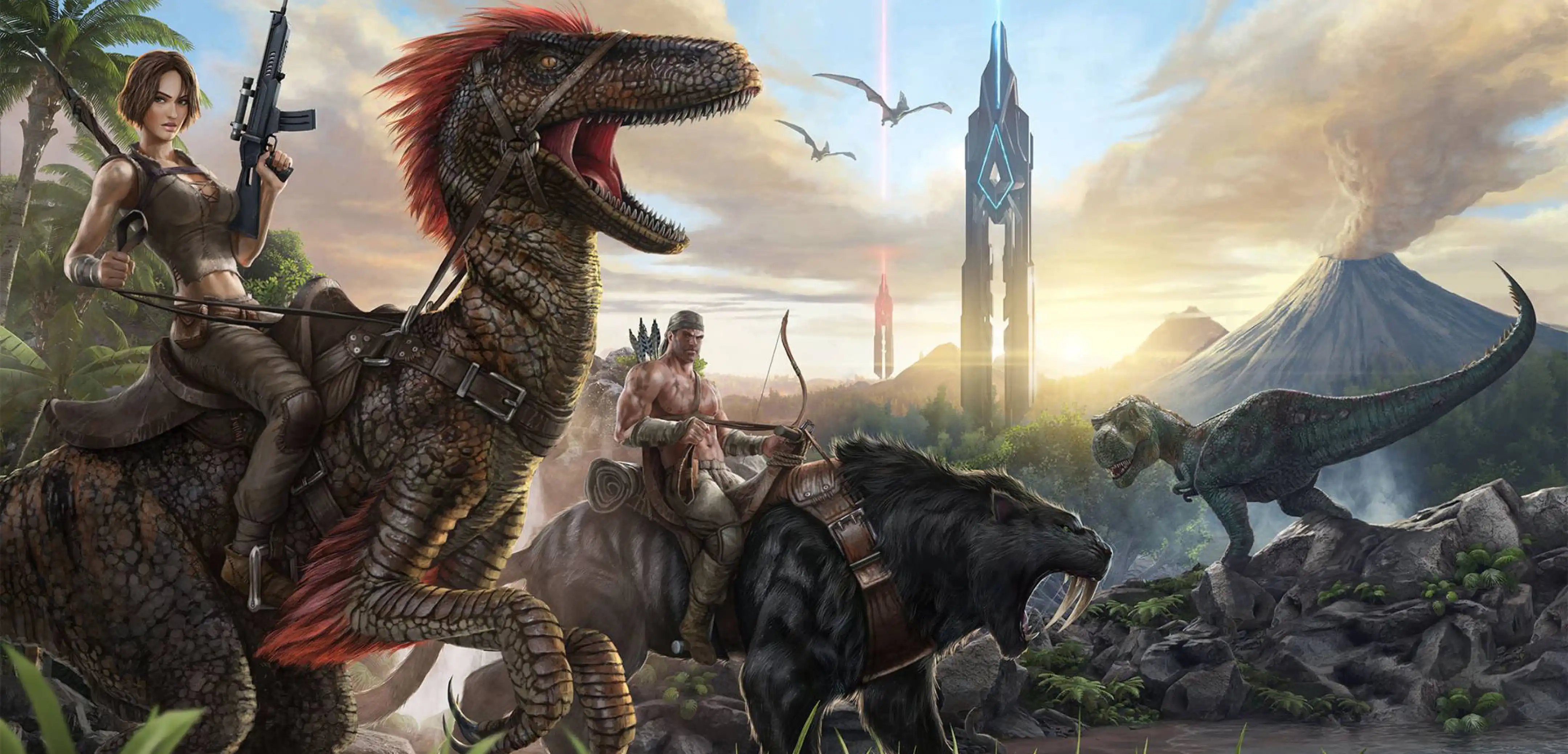
ARK: Survival Evolved Breeding Guide: Mating Requirements, Eggs, & Food Details
Posted on by
Breeding is one of the most intricate mechanics in ARK: Survival Evolved. Unlike other games wherein you put two parent creatures in a pen, let your character sleep, and wake up with an egg in the enclosure, in ARK, you'll need to balance mating requirements, egg incubation processes, and plenty more in order to greet a new generation of young dinos or creatures.
With that, here's how breeding works in ARK: Survival Evolved and all the things you'll need to manage for the right outcome.
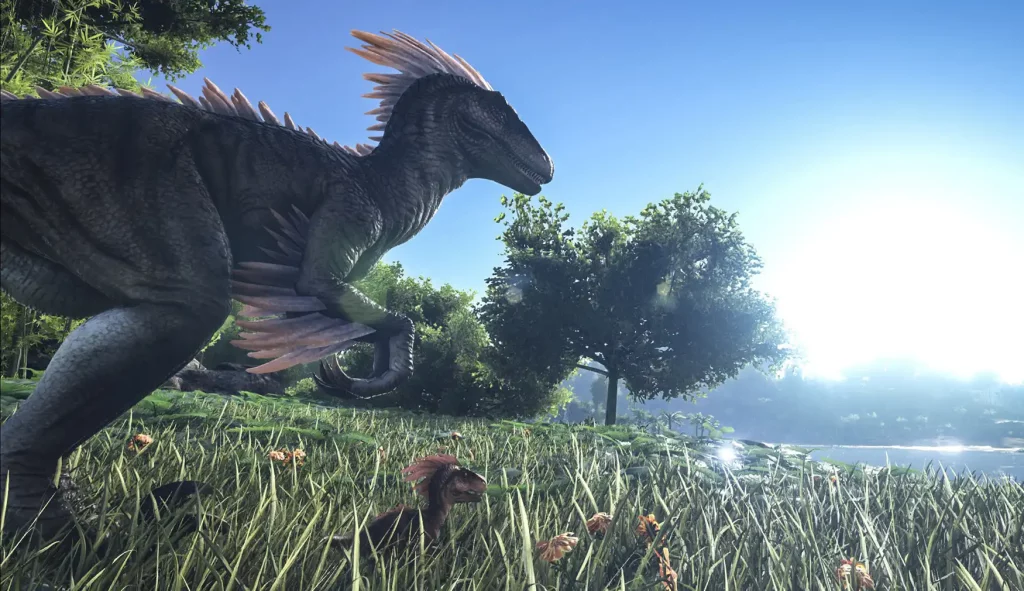 In ARK, breeding mechanics revolve around various systems combined into one giant yet cohesive arrangement of procedures. This set of processes ranges from mating preparations to the imprinting of characteristics to the offspring.
In ARK, breeding mechanics revolve around various systems combined into one giant yet cohesive arrangement of procedures. This set of processes ranges from mating preparations to the imprinting of characteristics to the offspring.
ARK: Survival Evolved Breeding Guide
 In ARK, breeding mechanics revolve around various systems combined into one giant yet cohesive arrangement of procedures. This set of processes ranges from mating preparations to the imprinting of characteristics to the offspring.
In ARK, breeding mechanics revolve around various systems combined into one giant yet cohesive arrangement of procedures. This set of processes ranges from mating preparations to the imprinting of characteristics to the offspring.
Mating Preparations
The first step to breeding in ARK is to find parents of the opposite sex. Attempting to let mate creatures of the same sex, obviously enough, won’t yield results. Also, players can’t cross-breed Aberrant, Original, Tek, X, and R creature variants. That means that only the same creature variant can create offspring. Other requirements to have a successful mating operation in ARK are:- Creatures must be within mating range
- Players must enable either mating or wandering to the creatures
- The creatures must not be following anything and are unburdened
- The creatures must not be mounting anything, have their reproductive organs intact, and aren’t in a mating cooldown
- Ferox: Only mates if the female has at least 95% addiction as a small creature
- Magmasaur: Only mates if the female is underneath lava in a Volcano Region on any map
- Megachelon: Only mates in the deep depths of the ocean
- Royal Griffin: Only mates with another gender with a similar surname
- Beelzebufo and Diplocaulus: Only mates in the water
How Mating Works
If the player successfully accomplishes the correct requirements for mating, the parent creatures will have a small red heart icon appear over their heads. Then, a mating bar will appear on the female variant’s HUD. The female creature will then produce an egg when the mating bar is full. After the female produces an egg, a mating cooldown timer appears. During this period, the female can’t mate with another male until this interval passes. Placing the creature in a Cryopod won’t stop the cooldown timer. Note: Ensure that the mating area is an enclosure. Otherwise, the mating session can stop if one of the creatures strays too far from the other. Also, avoid trying to mate one male with multiple females, as it significantly reduces the chance of generating offspring.Gestation and Egg Incubation Periods
Expectant mothers caring for their offspring in their wombs can consume up to double the amount of food they normally consume. During this period, players must provide immediate access to food to these female creatures. Failure to do so will put an unwanted risk of losing the baby. Warning: Placing a gestating mother in a Cryopod will terminate the gestation process, ultimately losing the baby. After the gestation period, a fertilized egg will only begin its incubation period if:- It falls to the ground or floor, or
- It's placed into an Egg Incubator correctly
- Allosaurus: 79 to 90 degrees Fahrenheit
- Anglerfish: -103 to 167 degrees Fahrenheit
- Ankylosaurus: 61 to 68 degrees Fahrenheit
- Araneo: 39 to 54 degrees Fahrenheit
- Archaeopteryx: 61 to 68 degrees Fahrenheit
- Argentavis: 54 to 56 degrees Fahrenheit
- Arthropluera: 64 to 72 degrees Fahrenheit
- Baryonyx: 84 to 95 degrees Fahrenheit
- Beelzebufo: 32 to 122 degrees Fahrenheit
- Bloodstalker: 81 to 86 degrees Fahrenheit
- Brontosaurus: 82 to 88 degrees Fahrenheit
- Carbonemys: 86 to 93 degrees Fahrenheit
- Carnotaurus: 79 to 90 degrees Fahrenheit
- Compy: 75 to 90 degrees Fahrenheit
- Crystal Wyvern: 167 to 185 degrees Fahrenheit
- Deinonychus: 176 to 194 degrees Fahrenheit
- Dilophosaur: 82 to 90 degrees Fahrenheit
- Dimetrodon: 86 to 93 degrees Fahrenheit
- Dimorphodon: 95 to 100 degrees Fahrenheit
- Diplocaulus: 32 to 122 degrees Fahrenheit
- Diplodocus: 79 to 84 degrees Fahrenheit
- Dodo: 72 to 86 degrees Fahrenheit
- Electrophorus: 32 to 122 degrees Fahrenheit
- Featherlight: 84 to 90 degrees Fahrenheit
- Gallimimus: 75 to 82 degrees Fahrenheit
- Giganotosaurus: 109 to 111 degrees Fahrenheit
- Glowtail: 86 to 93 degrees Fahrenheit
- Hesperornis: 72 to 86 degrees Fahrenheit
- Ichthyornis: 84 to 90 degrees Fahrenheit
- Iguanodon: 75 to 82 degrees Fahrenheit
- Kairuku: 72 to 86 degrees Fahrenheit
- Kaprosuchus: 84 to 95 degrees Fahrenheit
- Kentrosaurus: 75 to 86 degrees Fahrenheit
- Lymantria: 95 to 100 degrees Fahrenheit
- Lystrosaurus: 75 to 82 degrees Fahrenheit
- Maewing: 72 to 79 degrees Fahrenheit
- Magmasaur: 194 to 230 degrees Fahrenheit
- Mantis: 95 to 100 degrees Fahrenheit
- Megachelon: -103 to 167 degrees Fahrenheit
- Megalania: 84 to 95 degrees Fahrenheit
- Megalosaurus: 79 to 90 degrees Fahrenheit
- Microraptor: 75 to 82 degrees Fahrenheit
- Morellatops: 72 to 82 degrees Fahrenheit
- Moschops: 61 to 68 degrees Fahrenheit
- Oviraptor: 79 to 86 degrees Fahrenheit
- Pachy: 75 to 82 degrees Fahrenheit
- Pachyrhinosaurus: 72 to 82 degrees Fahrenheit
- Parasaur: 75 to 82 degrees Fahrenheit
- Pegomastax: 82 to 90 degrees Fahrenheit
- Pelagornis: 84 to 90 degrees Fahrenheit
- Pteranodon: 84 to 90 degrees Fahrenheit
- Pulmonoscorpius: 54 to 61 degrees Fahrenheit
- Quetzal: 41 to 43 degrees Fahrenheit
- Raptor: 68 to 82 degrees Fahrenheit
- Rex: 90 to 93 degrees Fahrenheit
- Rock Drake: -130 to -112 degrees Fahrenheit
- Sarco: 86 to 93 degrees Fahrenheit
- Snow Owl: 54 to 56 degrees Fahrenheit
- Spino: 86 to 90 degrees Fahrenheit
- Stegosaurus: 72 to 82 degrees Fahrenheit
- Tapejara: 84 to 90 degrees Fahrenheit
- Tek Parasaur: 75 to 82 degrees Fahrenheit
- Tek Quetzal: 41 to 43 degrees Fahrenheit
- Tek Raptor: 68 to 82 degrees Fahrenheit
- Tek Rex: 90 to 93 degrees Fahrenheit
- Tek Stegosaurus: 72 to 82 degrees Fahrenheit
- Tek Triceratops: 72 to 82 degrees Fahrenheit
- Terror Bird: 68 to 82 degrees Fahrenheit
- Therizinosaur: 79 to 90 degrees Fahrenheit
- Thorny Dragon: 72 to 82 degrees Fahrenheit
- Triceratops: 72 to 82 degrees Fahrenheit
- Troodon: 82 to 90 degrees Fahrenheit
- Tropeognathus: 84 to 90 degrees Fahrenheit
- Tusoteuthis: 32 to 122 degrees Fahrenheit
- Velonasaur: 82 to 90 degrees Fahrenheit
- Voidwyrm: 176 to 194 degrees Fahrenheit
- Vulture: 95 to 100 degrees Fahrenheit
- Wyvern: 176 to 194 degrees Fahrenheit
- Yutyrannus: 90 to 93 degrees Fahrenheit
- Crystal Wyvern Egg
- Deinonychus Egg
- Magmasaur Egg
- Rock Drake Egg
- Wyvern Egg
Claiming Babies
ARK players must “claim” babies immediately after hatching from their eggs. Complete this action by pressing the “use” key (by default, it’s the letter “E” key on the keyboard for PC users). Doing so imprints the player’s image on the newborn, claiming them. Note that other players can claim a newborn when the offspring appears from its egg. But the only exception to this rule is the Reaper King, wherein the player that gave birth to it has the authority to claim it. Warning: Claim babies as fast as possible, or else they’ll become aggressive. Alternatively, whistle “Passive” to avoid confrontations with newborns.Caring for Babies
Once breeding is complete in ARK, and the egg incubation is successful, there's still more work to be done. Each creature and dino requires significant time and effort to care for them, particularly during their infant stages. However, the caring method typically depends if the creature is a carnivore or otherwise.Carnivores
It takes 48 real hours to care for baby carnivores until they mature. It’s important to place a full stack of meat in their feeding troughs at least once every 26.6 real hours. The food spoils after this period, and failure to refill the container can result in the baby’s starvation and death.Herbivores
Players must fill an herbivore baby’s feeding trough with a stack of berries once every 66 real hours. Again, this food stack spoils after that period and needs to be replaced. If not, the newborn can die from starvation.Egg-Only Tames
Newborns hatched from egg-only taming will only eat specific types of food during their infant stages.- Magmasaur: Sulfur or Ambergris
- Wyvern: Wyvern Milk
- Rock Drake: Nameless Venom
- Crystal Wyvern: Primal Crystal
Special Creatures
Aside from the general creature population of ARK, some babies require special care procedures for them to mature.- Beelzebufo: The baby must be in the water
- Reaper King: Keep the infant away from other creatures, as it’s highly aggressive
- Royal Griffin: The baby must be near its mother, or else it won’t eat
Maturation Stages
Creatures bred in ARK will go through three maturation stages:- Baby: 0% to 10%
- Juvenile: 10% to 50%
- Adolescent: 50% to 100%
Imprinting
As babies mature, players can “imprint” stat boosts into them. This act results in making the newborns stronger than normal. The creature’s base stats can increase by 20% to 30%, depending on the action used. In particular, imprinting is possible by either cuddling, walking, or giving specific kibble.Create your own
Ark Survival Evolved server
Ark Survival Evolved server
Choose a plan, pick a game, and play with your friends!
Join our Newsletter
Subscribe for the latest updates on all things gaming!
How would you rate this blog?
Share your opinion and help us make our blogs even better!
Didn't like
Neutral
Liked
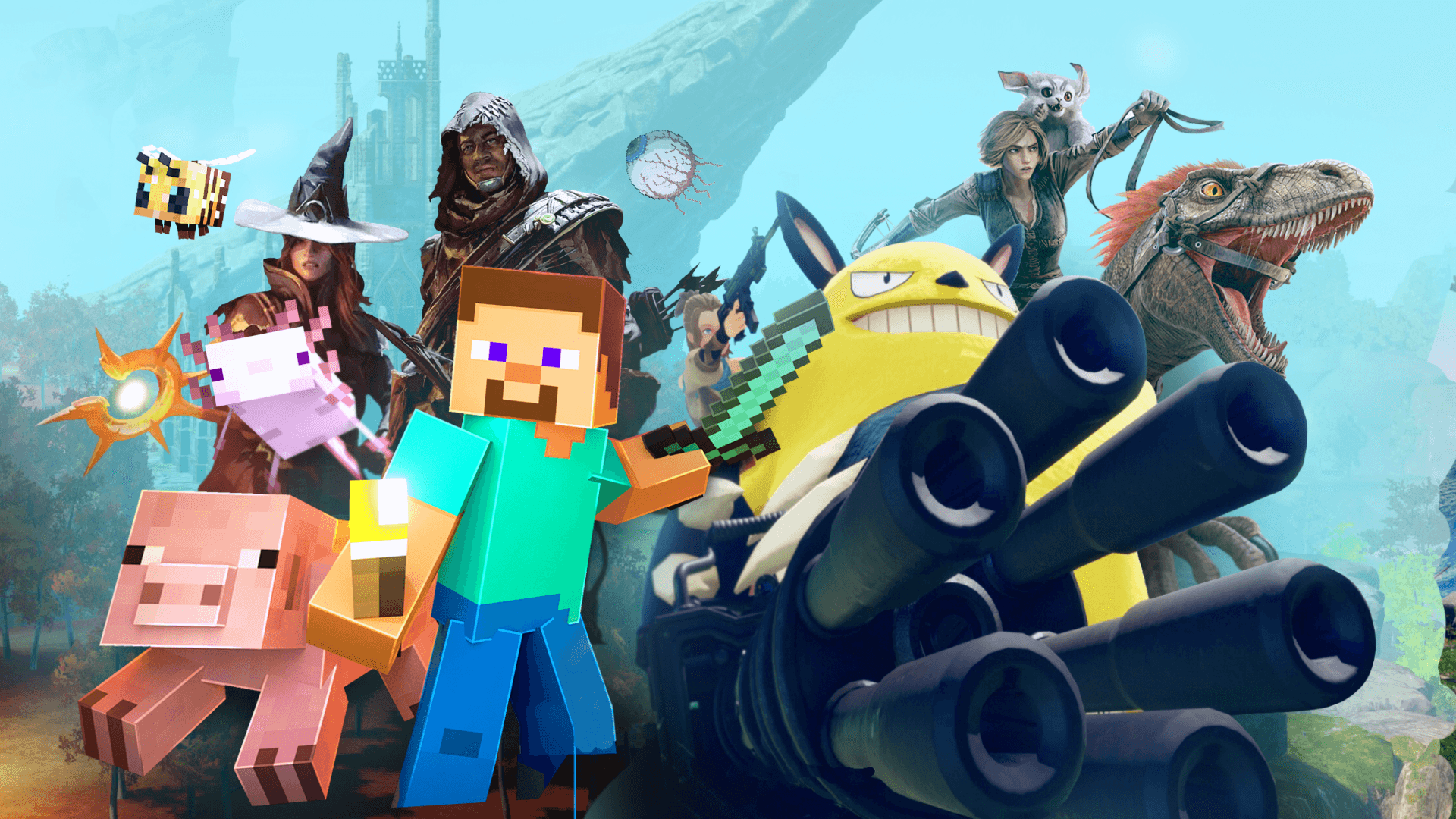
Need a game server?
Rent a game server where you and your friends can play privately with low latency and custom settings. Choose from 90+ games, invite people from around the globe, and enjoy private matches, or build your own online community with your own rules.

Relevant Blogs

GET THE INSIDE SCOOP!
Join our email for updates on our hosted games, company news and exclusive deals. Stay in the loop!








